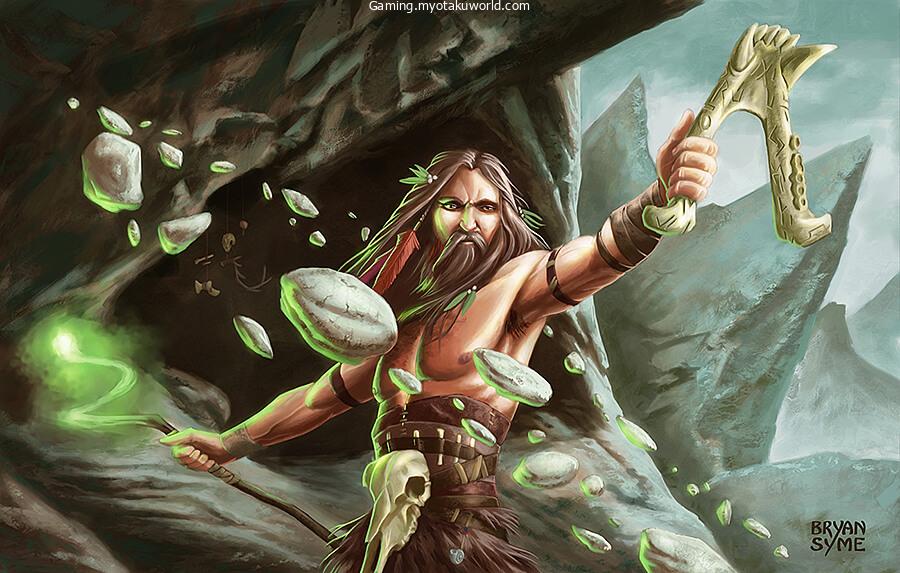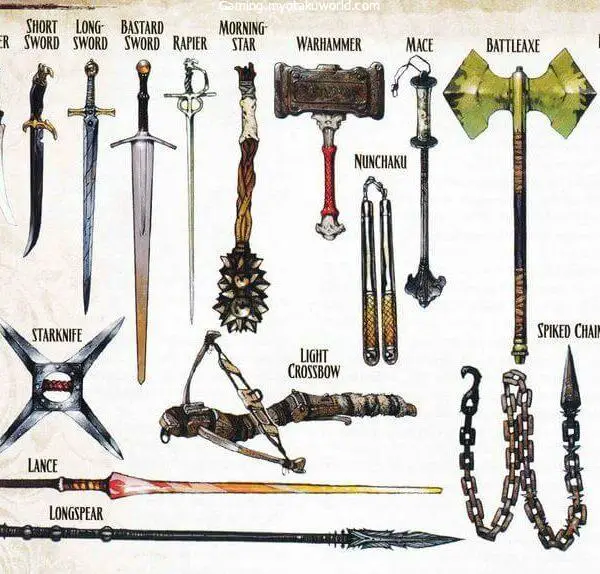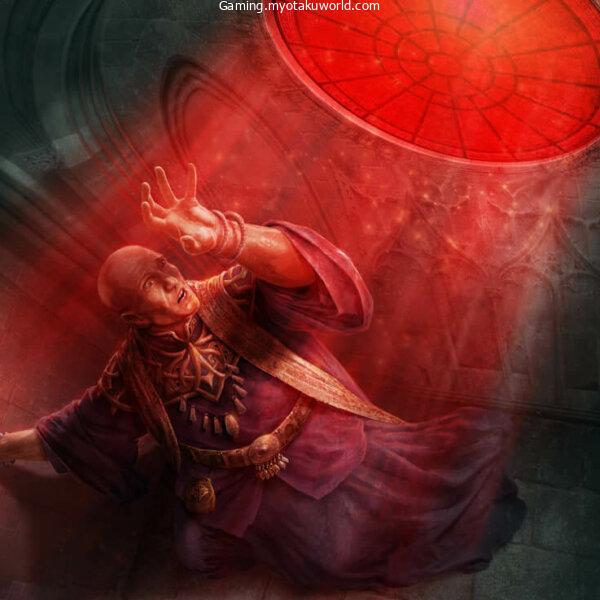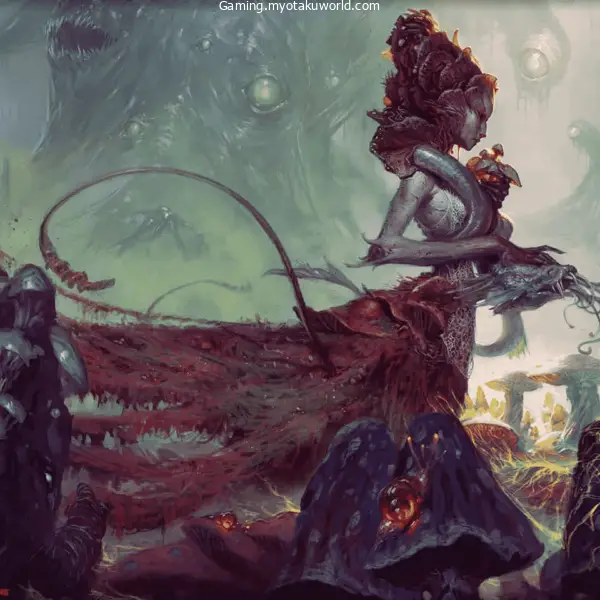Magical abilities, such as complete spellcasting development and the ability to shift into beasts with Wild Shape, are derived from nature for the D&D 5th Edition (D&D 5e druid) class.
With a diverse set of spells, Druids may heal and enhance their companions, deal damage and take down or disable adversaries, as well as change their surroundings.
Druids, in my experience, can fulfill the majority of a party’s spellcasting requirements, and their ability to specialize their prepared spells allows them to be particularly effective in practically any given specialty.
Druid spells in D&D 5e represent my own preference for variety above power while playing this class.
Please note that only spells that are at least 1st level are included in this list. In terms of spell levels, I’m referring to the defined level of each spell, not when a Druid would be able to use the spell.
- 25. Sleet Storm
- 24. Barkskin
- 23. Ice Knife
- 22. Thorn Whip
- 21. Thunderclap
- 20. Transport via Plants
- 19. Moonbeam/Flaming Sphere
- 18. Antipathy/Sympathy
- 17. Plant Growth
- 16. Shapechange
- 15. Enhance Ability
- 14. Plane Shift
- 13. Heroes’ Feast
- 12. Foresight
- 11. Heal
- 10. Faerie Fire
- 9. Wrath of Nature
- 8. Entangle
- 7. Goodberry
- 6. Healing Word
- 5. Pass Without Trace
- 4. Healing Spirit
- 3. Polymorph
- 2. Absorb Elements
- 1. Conjure Animals/Woodland Beings/Elemental/Fey
25. Sleet Storm

Source: Player’s Handbook
3rd-level conjuration
Casting Time: 1 action
Range: 120 feet
Components: V, S, M (a pinch of dust and a few drops of water)
Duration: Concentration, up to 1 minute
Until the spell ends, freezing rain and sleet fall in a 20-foot-tall cylinder with a 40-foot radius centered on a point you choose within range. The area is heavily obscured, and exposed flames in the area are doused.
The ground in the area is covered with slick ice, making it difficult terrain. When a creature enters the spell’s area for the first time on a turn or starts its turn there, it must make a Dexterity saving throw. On a failed save, it falls prone.
If a creature starts its turn in the spell’s area and is concentrating on a spell, the creature must make a successful Constitution saving throw against your spell save DC or lose concentration.
24. Barkskin
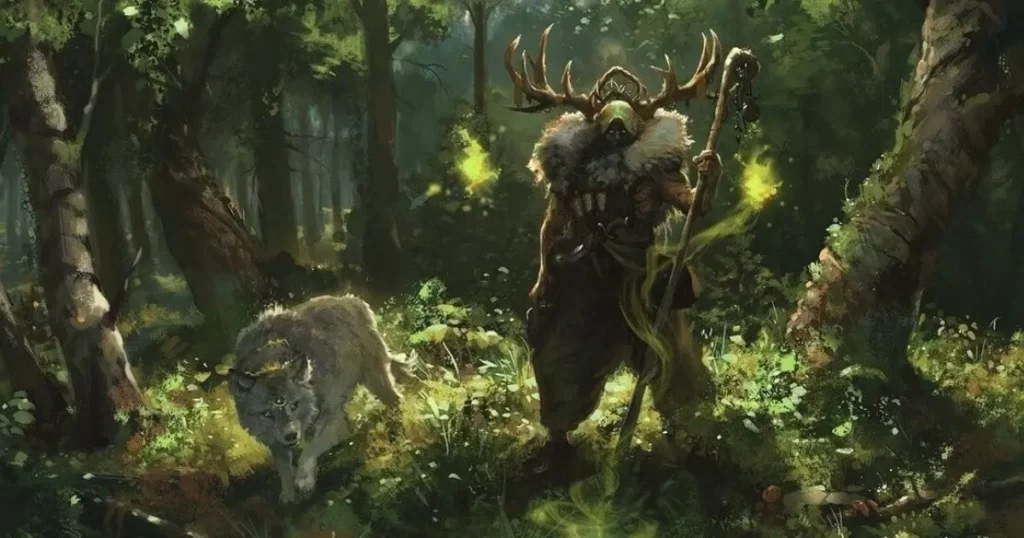
Source: Player’s Handbook
2nd-level transmutation
Casting Time: 1 action
Range: Touch
Components: V, S, M (a handful of oak bark)
Duration: Concentration, up to 1 hour
You touch a willing creature.
Until the spell ends, the target’s skin has a rough, bark-like appearance, and the target’s AC can’t be less than 16, regardless of what kind of armor it is wearing.
23. Ice Knife

Source: Xanathar’s Guide to Everything
1st-level conjuration
Casting Time: 1 action
Range: 60 feet
Components: S, M (a drop of water or piece of ice)
Duration: Instantaneous
You create a shard of ice and fling it at one creature within range. Make a ranged spell attack against the target.
On a hit, the target takes 1d10 piercing damage. Hit or miss, the shard then explodes.
The target and each creature within 5 feet of the point where the ice exploded must succeed on a Dexterity saving throw or take 2d6 cold damage.
At Higher Levels. When you cast this spell using a spell slot of 2nd level or higher, the cold damage increases by 1d6 for each slot level above 1st.
22. Thorn Whip
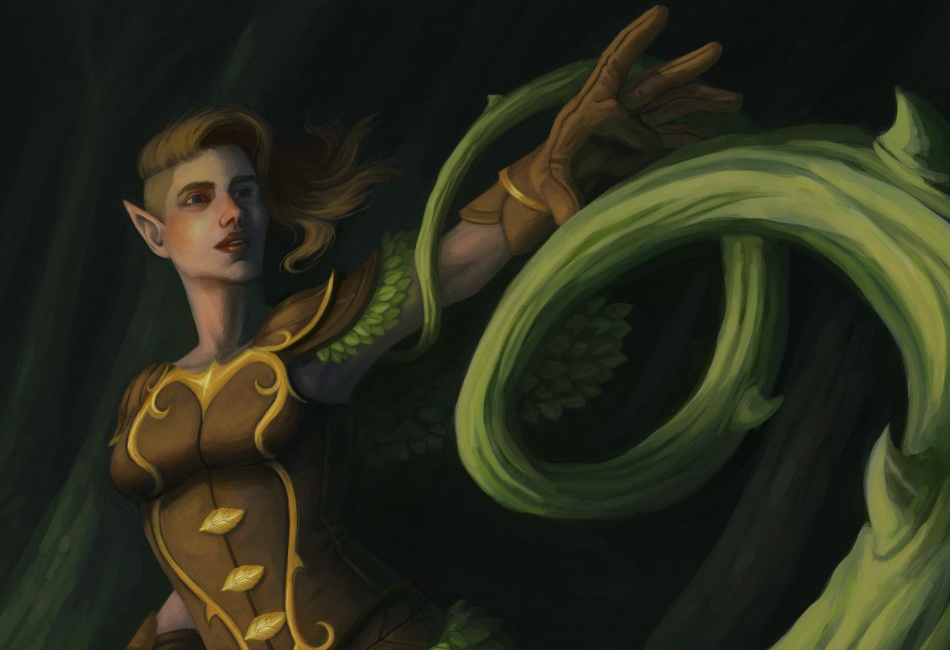
Source: Player’s Handbook
Transmutation cantrip
Casting Time: 1 action
Range: 30 feet
Components: V, S, M (the stem of a plant with thorns)
Duration: Instantaneous
You create a long, vine-like whip covered in thorns that lashes out at your command toward a creature in range.
Make a melee spell attack against the target. If the attack hits, the creature takes 1d6 piercing damage, and if the creature is Large or smaller, you pull the creature up to 10 feet closer to you.
At Higher Levels. This spell’s damage increases by 1d6 when you reach 5th level (2d6), 11th level (3d6), and 17th level (4d6).
21. Thunderclap
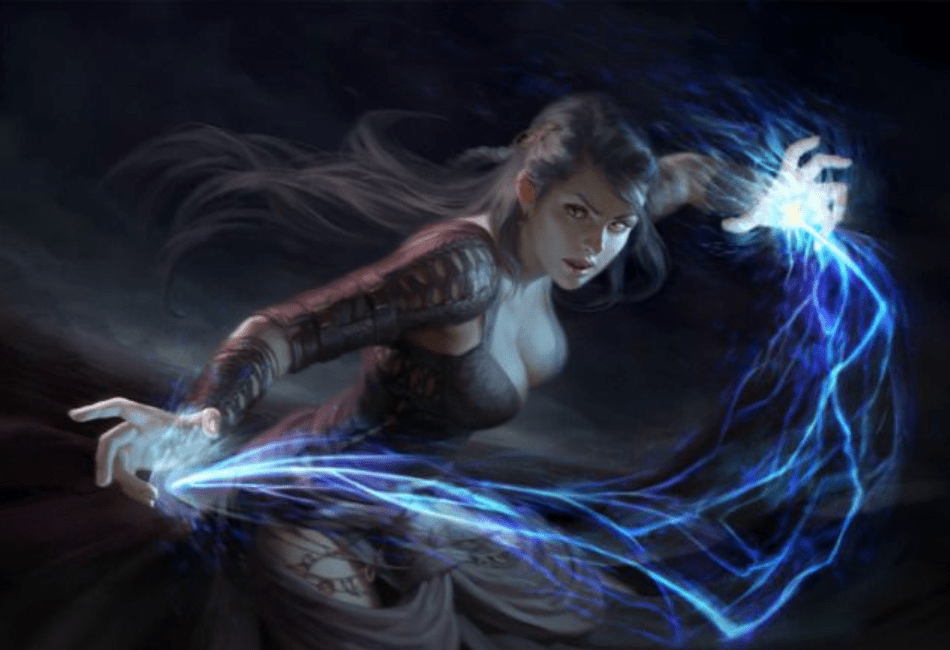
Source: Xanathar’s Guide to Everything
Evocation cantrip
Casting Time: 1 action
Range: Self (5-foot radius)
Components: S
Duration: Instantaneous
You create a burst of thunderous sound, which can be heard 100 feet away.
Each creature other than you within 5 feet of you must make a Constitution saving throw. On a failed save, the creature takes 1d6 thunder damage.
At Higher Levels. The spell’s damage increases by 1d6 when you reach 5th level (2d6), 11th level (3d6), and 17th level (4d6).
20. Transport via Plants

Source: Player’s Handbook
Druids are first granted access to long-distance teleportation via this spell at the 6th level, allowing them to move from one large-sized plant to another in the same level of existence.
The only limitation to be considered is that the Druid must have been able to touch or see the plant prior to their place of travel.
Plants are a great way to transport people. It can be a plus since it is perfectly fitting to the Druid’s natural theme.
19. Moonbeam/Flaming Sphere

Source: Player’s Handbook
Druids can use a variety of spells that target the damage over time.
Moonbeam and Flaming Sphere are two spells that fall into this category. A moonbeam has a 5-foot radius area, as does a flaming sphere, which is a sphere of 5-foot diameter that inflicts damage on nearby creatures, or whatever it strikes into.
Out of the two options, the moonbeam offers the most damage that is radiant. The flaming sphere is known to cause more resistant fire damage.
In contrast, the flaming sphere needs only one additional step to move, making it the most efficient choice in the economics of action compared to the moonbeam’s movement action.
Two spells are among the first examples of lasting damage that Druids are able to deal with, even though more destructive choices can be too expensive in terms of the number of slots available and the cost of the action economy.
18. Antipathy/Sympathy

Source: Player’s Handbook
The spell of the 8th level gives Druids two options to use its effects. It could target one particular creature or a region.
Antipathy can cause creatures of a particular kind to be scared of the object and make them flee from the target. Sympathy encourages that kind of creature to walk towards the target instead.
The effect can last for up to 10 days, which means you could theoretically plan it for your entire group in a matter of days. This is especially beneficial if you intend to fight a specific type of enemy.
17. Plant Growth

Source: Player’s Handbook
When Druids are granted access to spells of the 3rd level, they are able to prepare the growth of plants to be used in their daily lists of spells.
This spell is able to have two effects, dependent upon the length of time you need to apply it.
The eight-hour casting enhances the area within a half-mile distance, increasing the possibilities of harvests.
The option is perfect to fit into the druidic theme and offers a range of roleplaying possibilities.
The one-action casting time will cause all plants within 100 feet of the designated point to grow thicker and make it harder for creatures to traverse through.
While this additional effect does require plants to be present within the zone The effect can help you manage the battlefield, whether by causing confusion or preventing the movement of enemies completely.
Since the spell does not require concentration, the growth of plants allows Druids to add another spell over the terrain that has been altered.
16. Shapechange

Source: Player’s Handbook
For spellcasters who are fully proficient 9th-level spells are the highest level of their magic capabilities (though it can take some time to reach it) This list isn’t complete without one or two mentions.
For as long as one hour, the ability to change shape allows you to allow your Druid to change form into almost any type of creature that you’ve encountered at least once, insofar as the Challenge Rating is your grade or lower.
This spell basically provides an enhanced variant that Wild Shape with a shorter time frame, which allows the user to transform into other creatures that aren’t just the realm of beasts.
As with other transformative abilities, the ability to access these different forms can assist you in any circumstance.
15. Enhance Ability

Source: Player’s Handbook
A Druid is able to grant targets certain enhancements using this extremely multi-faceted 2nd-level spell.
The primary benefit is getting an advantage in ability tests for a particular score. However, some also provide additional advantages.
Because ability tests are a regular aspect of the game, improving abilities is a useful option for any Druid to have on hand.
14. Plane Shift

Source: Player’s Handbook
A powerful spell of 7th level that allows your Druid to travel with eight other allies to another dimension of existence, provided that you possess the right material component. But, this spell can be beneficial during combat.
If you choose to target a creature who is unable to make a Charisma saving roll (which most creatures do not have an effective bonus for), against the effect of plane shift, you are able to send them to another dimension of existence.
For many creatures, this destiny is usually associated with death, which makes this spell a powerful choice to defeat an opponent.
13. Heroes’ Feast

Source: Player’s Handbook
To cast this spell of 6th level, you need to purchase the material component of 1,000 GP, which is consumed during casting.
In return, you will be able to have your druid create a delicious meal for up to 12 people.
The next 24 hours following the consumption of the meal grant an incredibly good benefit: elimination of all poisons and diseases immune to poison, the fearful condition, the benefit of any wisdom saving throws, and a 2d10 increment to the maximum hit point.
If you’ve got an important adventuring day due, it’s definitely worth investing the gold to pay the Druid to create the heroes’ feast.
12. Foresight

Source: Player’s Handbook
Another spell that can be used at the 9th level for Druids is Foresight. It is one of the most powerful effects in the game and can bring a myriad of effects to creatures for 8 hours.
The target gains an advantage (meaning they roll a d20 twice and get the best result) when they attack, as well as ability checks and saving throws. In addition, they can not be stunned.
In addition, some creatures are less able to attack targets that are boosted by foresight. As a spell of support, Druids can’t go wrong by using this option.
Put it on a person who is often attacked, such as fighters or paladins!
11. Heal

Source: Player’s Handbook
In addition to Clerics, Druids are probably the second-highest potent class of healing in the game.
Additionally, their access to the sixth-level healing spell firmly cements the healing area.
Heal can provide some profound benefits for restorative purposes since the patient is able to regain 70 hit points and is free from deafness, blindness, or illness-related symptoms.
Druids who want to fulfill this role should write this spell as soon as they are granted access to it.
10. Faerie Fire

Source: Player’s Handbook
Faerie fire is a first-level spell that impacts the 20-foot cube, which is then suffused with the appearance of a rainbow.
Creatures within the region that are unable to save themselves against this effect will be highlighted by light, causing attacks against them to gain an advantage and hindering their benefit from invisibility effects.
By using this spell, your Druid could offer both a party buff and an enemy debuff all in one spell.
9. Wrath of Nature

Source: Xanathar’s Guide to Everything
The Wrath of Nature is a highly thematic 5th-level spell that invokes natural trappings (such as rocks, brush, and trees) over a large expanse.
Up to a point (concentration willing), this spell is able to be used to deter, control, or cause damage to creatures you choose within the vicinity.
The most appealing aspect of this magic spell is that the various effects don’t require you to take action to go beyond the initial casting.
This leaves you to focus your subsequent turns focusing on different possibilities.
8. Entangle

Source: Player’s Handbook
Entangle offers an early game option for area denial and crowd control for enemy players.
The spell at 1st level creates an area of 20 feet of vines and weeds that are considered difficult terrain. In addition, it is able to be used to stop creatures that do not make strength-saving throws when moving through it.
The effects will last as long as you are focused for up to a minute and the restrained animals must focus on their actions regardless of whether they succeed or fail and even attempt to escape.
Entangle is an overall great spell to be prepared for upcoming Druids.
7. Goodberry

Source: Player’s Handbook
This spell is 1st-level. Druids can make up to 10 magical berries that replenish 1 hit point every day and provide a full entire day’s worth.
This spell offers an effective method of healing, particularly for parties with low levels.
The Berries are distributed or consumed by other characters of their own initiative They are therefore potent for bringing friends back from a state of unconsciousness.
Although good berries have their effects wiped out for 24 hours following their birth, druids must generally be prepared for this spell since there’s no reason to not constantly make batches of spell slots that have been left over after an adventurous day.
6. Healing Word

Source: Player’s Handbook
When playing 5e, healers are able to restore a tiny number of damage points for their friends due to the die-to-save mechanics and the fact that the total hit points cannot be less than zero.
Healing word grants Druids an action of 1st level bonus spell that heals creatures to let them return to fighting.
This spell is a way to free the possibility of using other spells (so long as you don’t use another spell). Choosing to cast a word healing is usually the best option.
5. Pass Without Trace

Source: Player’s Handbook
Other than turning everybody invisible, passing without a trace is the ideal option for helping you and the creatures that are within the distance of your own. be able to move about in a quiet manner.
This 2nd-level spell gives an impressive +10 bonus to stealth checks. It also prevents the affected creatures from being detained for as long as possible (so long as you keep your focus).
Pass without trace makes your armored friends get sneaky and make Rogues (or similarly skilled characters) even more effective at sneaking passed by unnoticed.
4. Healing Spirit

Source: Xanathar’s Guide to Everything
This spell will make your Druid invokes a restorative nature spirit in a specified location.
Creatures you choose to are able to move through it get healing when they first perform this action in a turn, and this healing effect can last up to one minute (with your attention).
The spell, as written, does not limit the number of creatures that can benefit from the effect, or the number of times you can use it to heal, which makes it a controversial and often prohibited spell that is not allowed to be modified.
But even when your DM alters the way healing spirit is used, however, it could still be a viable option for healing, but at the cost of (at a minimum) an additional 2nd-level spell slot.
3. Polymorph

Source: Player’s Handbook
A very versatile spell at 4th level polymorph lets you depend on a variety of beast forms to solve your issues.
For instance, the Druid can slash an opponent by making them a harmless creature, like a rabbit or small turtle.
The transformation into a huge bird could help you transport your companions across obstacles and long distances. The rear of whales can temporarily function as a sea-going vessel.
Druids could naturally have the ability to transform into useful forms of beasts, but polymorph expands this capability (to only a certain degree) to their friends.
2. Absorb Elements

Source: Xanathar’s Guide to Everything/Elemental Evil Player’s Companion
Druids have the best spell solution for their reactions using the ability to absorb elements.
If you suffer fire, acid, cold lightning, thunder, or damage, this spell of the 1st level gives you resistance to the damage type until the beginning of your next turn.
The additional effect of this spell also amps the next melee strike you make by 1d6 of the exact damage type, but only for the next turn.
An excellent defensive option This spell could help to protect your Druid from some injury.
1. Conjure Animals/Woodland Beings/Elemental/Fey

Source: Player’s Handbook
Druids can access several spells that permit them to summon various types of creatures.
When summoned, these creatures will follow your instructions by fighting for you, making use of their skills as required.
The kind of creature is based on the spell being used to Conjure animals (3rd-level spell) Conjure woodland creatures (4th-level spell) Conjure the elemental (5th-level spell) and conjure the fey (6th-level magic).
Your summoned creatures offer you access to an array of abilities as well as casting spells.
Along with potential battle capabilities, these spells could be beneficial in or out of combat scenarios. Additionally, it’s never a bad idea to have extra individuals on the field to assist in an emergency.
The levels of magic your Druid has the ability to access, I suggest that you have at the very least some of the spells ready.
